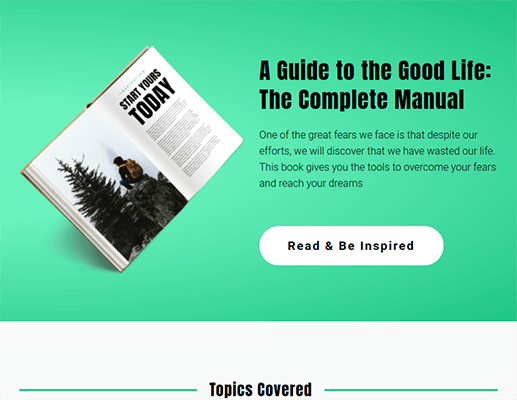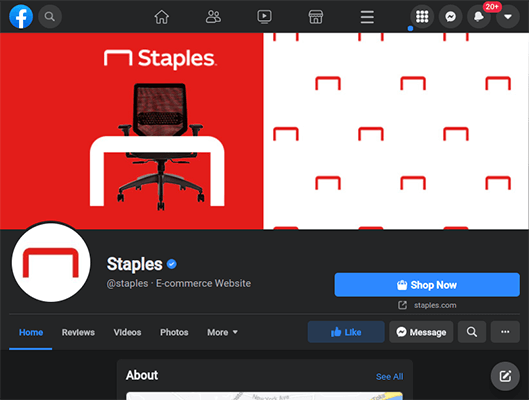How To Master Lead Generation In Digital Marketing
Is lead generation a weak spot in your digital marketing strategy?
Mastering lead generation is the most effective way to convert more of your readers and social media followers into customers.
In this post, we’re going to show you two key strategies for mastering lead generation in the world of digital marketing.
The key to mastering lead generation in digital marketing
Lead generation as an inbound marketing strategy has a lot of technical components you’ll need to learn such as: landing page designs, opt-in forms, social media post scheduling, etc. Unfortunately, no amount of technical know-how will make up for marketing messages that do not target your audience’s greatest pain points.
Your audience holds the key to mastering lead generation in digital marketing.
By learning more about your audience, you can connect with them in ways your competitors aren’t. You’ll be able to create products that provide solutions to the individual sets of problems they’re facing. You’ll also be able to optimize every step in the lead generation process by aligning your marketing offers with your potential customer’s needs.
Specifically, the data you collect from your audience can be organized into three categories:
- Needs – Specific problems your audience faces on a day-to-day basis in your niche.
- Goals – The stage the majority of your audience is currently at in your niche and where they intend to go.
- Interactions – The way your audience connects and communicates with your business.
Every little piece of data you collect can help you optimize some part of the lead generation strategy you come up with.
Basically, the more you know about your audience, the more you’ll be able to convince them you have the solutions they need.
How to learn more about your audience
There are multiple ways for you to get to know your audience, but let’s focus on three primary methods: audience surveys, Google Analytics (or your preferred analytics tool) and heatmaps.
There are five pieces of data you can collect from your audience to help you optimize your lead generation strategy:
- Their position in your niche
- The social media platforms they use
- Their biggest pain points
- How they prefer to consume content
- Their day-to-day lives
The first one has to do with the stage the majority of your audience is at in your niche. Let’s say you run a blog that teaches people how to bake, and the majority of your content revolves around professional baking.
You can run a small poll on your site and through your email list that asks your audience to rate their skill levels in baking.
If the majority of them are beginners, they likely aren’t connecting with your advanced baking tutorials.
You can also discover this information by viewing your top pages in Google Analytics.
Moving on, knowing which social media platforms are most popular among your audience is a great way to ensure you don’t waste time and money on platforms your audience doesn’t even use.
You can use audience surveys and polls to ask your audience which platforms they use. Traffic referrals in Google Analytics are another way to go.
Ask new email subscribers this question in one of your welcome emails:
“What is the biggest problem you’re currently facing in [your niche]?”
You should also ask current subscribers this question from time to time.
It’s an open-ended question that will let you know your audience’s biggest pain points. This is a great way to determine what content to create and how to frame your marketing messages.
You should also ask your audience how they prefer to consume content. If your audience prefers watching content over reading it, you may be able to generate more leads by turning your blog posts into videos.
Ask your audience if they read your blog on a desktop or mobile device primarily. Google Analytics has this information as well.
Similarly, ask if they prefer blog posts, podcasts or videos regardless of the creator.
Lastly, use audience surveys to determine how your readers live their lives. For instance, if the majority of them are married with children, you’ll need to optimize your content, products and marketing messages in ways that align with their busy schedules.
The 2 most popular ways to collect leads in digital marketing
Most businesses collect and communicate with leads in two primary forms of marketing: email and social media.
In email marketing, you’ll use precise marketing tactics to build a segment in your list filled with subscribers who are most likely to buy from you. You’ll nurture them with targeted content before asking them to buy.
You can’t segment social media followers and target them in this way. This is a huge reason why email marketing is sometimes more effective than social media marketing.
However, there are multiple ways for you to gain new customers from social media alone, which is why this strategy is so important for lead generation.
How to generate leads through your email list
It should come as no surprise, but growing your email list is not the same as generating leads. Some, if not most, of your subscribers cannot be considered “qualified leads,” meaning they didn’t join your list through a targeted sales funnel or marketing strategy.
Your goal is to come up with both by using the information you gathered from your audience.
Your sales funnels will look different from ones created by other businesses. Still, the components you need are the same throughout:
- Compelling lead magnet to attract potential leads
- Landing page designed for conversions
- Multiple ways to get potential leads to visit your landing page
- Well-designed opt-in form
This cuts out the fundamental parts of the sales process and only focuses on lead generation.
Let’s elaborate on each one.
Creating a lead magnet to attract potential leads
You have your product or service. Hopefully, it provides a solution to one of the pain points you identified when you surveyed your audience.
What you need to do is break down that solution into pieces and come up with a lead magnet for one individual piece.
It could be an ebook, an email course, a free course offered through a learning management system, a resource PDF, etc. It just needs to target a tiny portion of the solution your product or service provides.
Creating a landing page designed for conversions
Next, you need a landing page to advertise your lead magnet. Unfortunately, most landing pages have a conversion rate of only 10%. This happens for a variety of different reasons, including advertising your product directly.
Technically, any page that features an opt-in form can be considered a landing page. However, landing pages that use fewer than 100 words convert 50% better than pages with more copy.
This means you should prioritize landing pages that focus on your lead magnet and use blog posts as landing pages less.
Create a simple landing page that markets the solution your lead magnet provides. Use images and whitespace strategically, and publish the page with no more than two fonts and font styles.
Fonts and colors should complement one another.

For page building in WordPress, Elementor, Thrive Architect, OptimizePress and Beaver Builder are incredibly useful options.
Use your scroll-depth stats to determine a maximum length for your landing page regardless of the amount of copy you place in it.
You can also use heatmaps once the page is published. This will let you know which parts grab your audience’s attention the most.
Increasing referrals to your landing page
You should implement a variety of different methods to drive traffic to your landing page, but do what makes sense for your blog, schedule and budget.
Your own content is a fantastic starting point. Instead of simply placing your opt-in form throughout your post, insert a link to your landing page instead.
You may gain fewer leads by adding an extra step to get to your opt-in form, but the leads you do acquire will be highly qualified.
Next is advertising. Facebook and Instagram ads are most effective, but you can also use Twitter and Google.
Don’t discount general social media posts, either.
Lastly, utilize guest posts strategically. Don’t ask to insert a link to your website or social media accounts in your author bio. Create a post for the solution you’re providing instead, and find a place to insert your link naturally.
For example, if your lead magnet is an ebook, include a small section in your post for “the best ebooks on [your subject],” and include your book in the list.
Optimizing your email opt-in form
Insert at least two opt-in forms on your landing page: one at the top and one at the bottom.
If you use an image in your form, don’t use an image where you place it. Similarly, feel free to use an image in the same area as your opt-in form if it doesn’t have an image.
Nevertheless, the image should draw your reader’s attention to the form. If you use a picture of yourself, face your eyes or head in the direction of the form.
If you use a picture of your product, be sure it’s striking enough to draw your reader’s attention.
You can even use a contact form if you feel it suits your business, especially if your lead magnet is a free consultation.
How to generate leads through social media
Use the information you gathered to determine which social media platforms to focus on. 82% of social media leads come from Twitter, so that may be a good starting point.
Optimize your most important profiles. Your avatar and banner image should complement one another. Your bio should also represent your current marketing campaign.

Insert links to your shop page or a key product page if you’re using Twitter and Facebook. Facebook lets you add buttons to business pages.
Use a link-in-bio tool like Shorby if you’re using Instagram. This will allow you to build a small splash page filled with your best products or a landing page for a specific product.
You should also add your contact information and keep Facebook Messenger and your direct messages open. Make yourself available to potential customers.
Shareable content is another way to generate leads on social media. Create more content that’s entertaining or inspirational but doesn’t necessarily promote your business or a particular product. Your followers will share this content, and you’ll likely earn more followers in the process.
You should also create ads for your products, especially Facebook and Instagram ads. It cuts out the nurturing process, but if your ads are compelling enough, you may be able to build a system that converts social media leads into customers.
Lastly, consider combining your email and social media marketing strategies. You can do this by using your following or social media ads to promote your lead magnet, then drive that traffic to your landing page. Social media scheduling tools like SocialBee make the process easy.
Final thoughts
Once you implement your versions of these key lead generation strategies, find ways to optimize them even further.
Google Analytics will tell you which referral source generates the least amount of traffic. Heatmaps and Google Analytics will also let you know how potential leads interact with your landing pages, as stated before.
If you receive visitors but very few conversions, test different landing page and opt-in form designs. Test different lead magnets if conversion rates continue to be low.
Once you master lead generation, move on to optimizing the email portion of your sales funnel so you can convert leads into customers.
